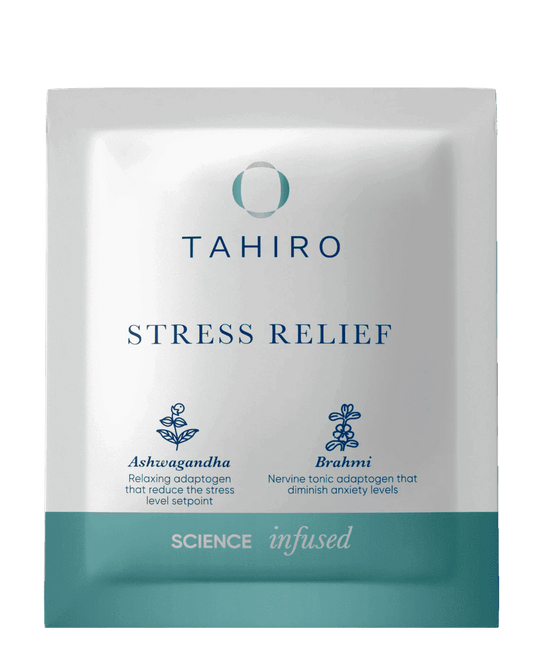Stress is an extremely common problem, withmore than half of Americans reporting that they feel stressed during the day. What happens during the body’s stress response? Are there good and bad types of stress? How does stress affect the brain? In this article, we’ll talk about what stress really means in a biological sense, with a particular focus on its effects on the brain.
What is stress?
Stress refers to any situation that your brain perceives as a potential danger to your survival. Exactly what this means is highly individual. A situation that’s stressful for one person may not be stressful at all for someone else.
Your past experiences, along with your personality and your inborn tendencies, will influence whether a particular situation will be interpreted by your brain as dangerous and cause stress.
What causes stress in the brain?
The amygdala is the main part of the brain that’s involved in perceiving stress. This is an almond-shaped structure located deep inside the brain. It’s a paired structure, meaning that there’s one amygdala located on each side of the brain.
When the amygdala senses a stressful situation, it initiates the stress response by sending signals to another part of the brain, known as the hypothalamus. The amygdala learns what types of situations warrant a stress response, meaning that it’s possible to retrain the amygdala to become less reactive to particular situations. Different methods of therapies often help people to do this.
What is the biology behind stress?
After it’s activated by the amygdala, the stress response has two main parts. One is a faster circuit known as the sympathetic-adreno-medullar (SAM) axis, and the other is a slower one known as the hypothalamic-pituitary-adrenal axis (HPA) axis.
The first part of both circuits is the hypothalamus. This is a region of the brain that’s involved in governing basic bodily functions, like blood pressure, heart rate, and breathing. When it receives signals from the amygdala that a stress response is necessary, it activates a part of the nervous system known as the sympathetic nervous system.
This is the beginning of the faster system, the SAM axis. These signals trigger the adrenal glands to release epinephrine and norepinephrine, also known as adrenaline and noradrenaline. The release of these substances is very fast. This is the SAM axis.
The slower system, the HPA axis, involves the release of hormones rather than nervous system signals, which takes a little bit longer. The hypothalamus releases a hormone called CRF. This signals the pituitary gland, which is a pea-sized gland located just behind the bridge of your nose.
The pituitary gland is a master gland, which releases hormones that control many other glands in the body. When it detects CRF released by the hypothalamus, indicating that a stress response has occurred, it releases a hormone called ACTH.
ACTH acts on the adrenal glands, which are located on top of the kidneys. These release a variety of chemicals into the bloodstream, including a hormone called cortisol. Cortisol is important in the stress response, and it acts on a variety of tissues throughout the body.
It increases blood pressure and blood sugar levels, to prepare the body for physical activity (such as fighting or running away). Cortisol also inhibits processes like digestion and sexual desire, which are not crucial in an emergency situation and can be delayed until later.
When the stress response is activated only occasionally and for a short period of time, it doesn’t cause harm. Once the trigger for the stressful response is gone, the body will quickly return to its baseline. However, if stress lasts for a long time or occurs multiple times every day, then it starts to cause a variety of problems throughout the body, including in the brain.
How Stress Affects Your Brain
Once the HPA axis has released cortisol and other stress hormones into the bloodstream, these will have effects throughout the body, including on the brain itself. There are three main parts of the brain that are impacted by cortisol.
One of these is the amygdala itself. Cortisol acts on the amygdala to reinforce the stress response, ensuring that the amygdala will remember the situation that caused the stress.
This means that a situation that has been perceived as stressful once is more likely to be perceived as stressful again the next time it’s encountered. In other words, there’s a feedback loop built into the nervous system, where stress tends to lead to more stress.
When the amygdala is exposed to chronically high levels of cortisol over a long period of time, it tends to grow bigger. This tends to make a person more reactive to stress, and they may frequently become fearful or angry as a result.
Another region that’s impacted by cortisol is the hippocampus. This is a structure deep in the brain that’s involved in learning and memory. Long-term exposure to cortisol actually shrinks the hippocampus. In addition, it causes the hippocampus to become less connected to other parts of the brain. In this way, chronic stress impairs your memory, and can even increase the risk of dementia.
The third brain region strongly impacted by cortisol is the prefrontal cortex. This is important for advanced brain functions, including attention, long-term planning, and impulse control. It’s also important in working memory – the ability to hold information in short-term memory while using it. Chronic cortisol exposure can shrink the prefrontal cortex, and reduce its connections to other parts of the brain.
What are the different types of stress?
The stress response generally proceeds in the same way, regardless of the specific type of event that caused it. The same set of biological responses follows the amygdala’s detection of stress.
Psychologists have sometimes divided stress into eustress and distress, sometimes known as “good stress” and “bad stress.” The idea is that eustress is beneficial because it helps you to achieve your goals. For example, if you feel anxiety about an upcoming deadline, you’ll be motivated to finish your project, and you’ll then feel good about what you accomplish.
By contrast, distress is harmful because it functions as an impediment to your goals. For example, if you become anxious that you’re not good enough to succeed in your work, then you may become too overwhelmed to do any work on your project at all.
Although this distinction has been used in psychology for many years, it’s also been widely criticized. In fact, the reaction of the body to a stressful situation doesn’t really vary based on whether the stress is “good” or “bad.” The same signaling pathways are activated either way. Whether the stress response leads to good or bad outcomes depends on a variety of other factors.
In general, biologists tend to avoid referring to “eustress” and “distress,” and instead refer simply to “stress.” However, many psychologists still use the distinction, as they’re often seeking to help their clients reframe their reactions to stressful situations so that they can respond in more helpful ways.
Even though all stress is ultimately the same, this doesn’t mean that we’re powerless to do anything about it. The nervous system can be retrained to experience less stress. The same situation may no longer trigger a stress response in the amygdala, so the HPA axis doesn’t get activated.







